- Call us: 01444 237070
- Contact Us
- Stores
- Sign In / Register
- Black Friday Deals
-
- Back
- Used Cameras
- Used Accessories
- Used Lenses
- Used Video
- Used Film Equipment
- Used Stock Alert
- Used Blank Test
- Sell or Part Exchange
- All Used Black Friday Deals
- Used Clearance
- Recently Added Used Equipment
- Park Picks
- Faulty
- Trade-In
- Blog
- New in
- Call us
- Contact us
- Stores
- Sign in
- Categories
- Tips & Inspiration
- Reviews
- News
- Events
- Features
- Buying Guides
- Competitions
June Astrophotography Highlights UK and NI
A brief tribute...
Astrophotography is essentially a crazy way to spend time. If you are like me and a member of an astro club, you will often find yourself loitering in a car park in the middle of nowhere with a few other like-minded individuals, sat in the cold trying to take photos in the dark! However, the reward of this discipline is not just the images that you get, but also the skills and knowledge you acquire, not to mention a free lesson in patience!

Like our ancestors who set out on a night hunt, we in our modern ways are no different just that the prey are galactic wonders!
When I first took up this adventure, there was one man who stood out beyond all others, who shared his experience, knowledge, guidance and quite often opinions freely (whether you wanted to hear them or not!). His name was Andy T. Lee. Many nights I have spent learning from him, especially in his favourite astro spot in the megalithic graveyard that is Kithurst Hill, South Downs. One night last May (2024), he messaged me saying there was a high chance we would see the aurora tonight something which I have heard a million times before, and a million times since, without it ever really materialising. However, on this occasion I humoured Andy and met him at Kithurst. I had no idea how to capture aurora, and even less of an idea that it was a possibility we might see something in Sussex.
To my utter surprise, that solar flare hit us hard like some sort of spiritual awakening. The columns of green, red and pink light were all around us; it was like we could reach out and touch them. I immediately abandoned setting up my deep space rig, pulled my tripod out from my car, put the Canon 7D armed with the widest lens I had in my bag (EF-S 18-55mm) on top and started shooting. I had no clue as to what I was doing, but with Andy’s guidance despite my excitement and inability to focus (that’s both on the task at hand, and the camera!) he helped me take some shots, whilst he captured many on his rig.
Sadly, Andy lost his battle with cancer a few weeks ago. His passion, enthusiasm and commitment to all things photographic no doubt have inspired me to keep going with this interest.
Here is the photo I took that night you can see Andy’s rig in the foreground. Please forgive my inability to focus.
The greatest tip he gave me was to not be afraid to bin rubbish subs only keep the very best. It sounds simple, but it is very hard when you know that each sub-exposure represents five minutes of imaging time. But there really isn’t any point in keeping them; they won’t enhance your image at all.
Thanks Andy for all of the help and inspiration!
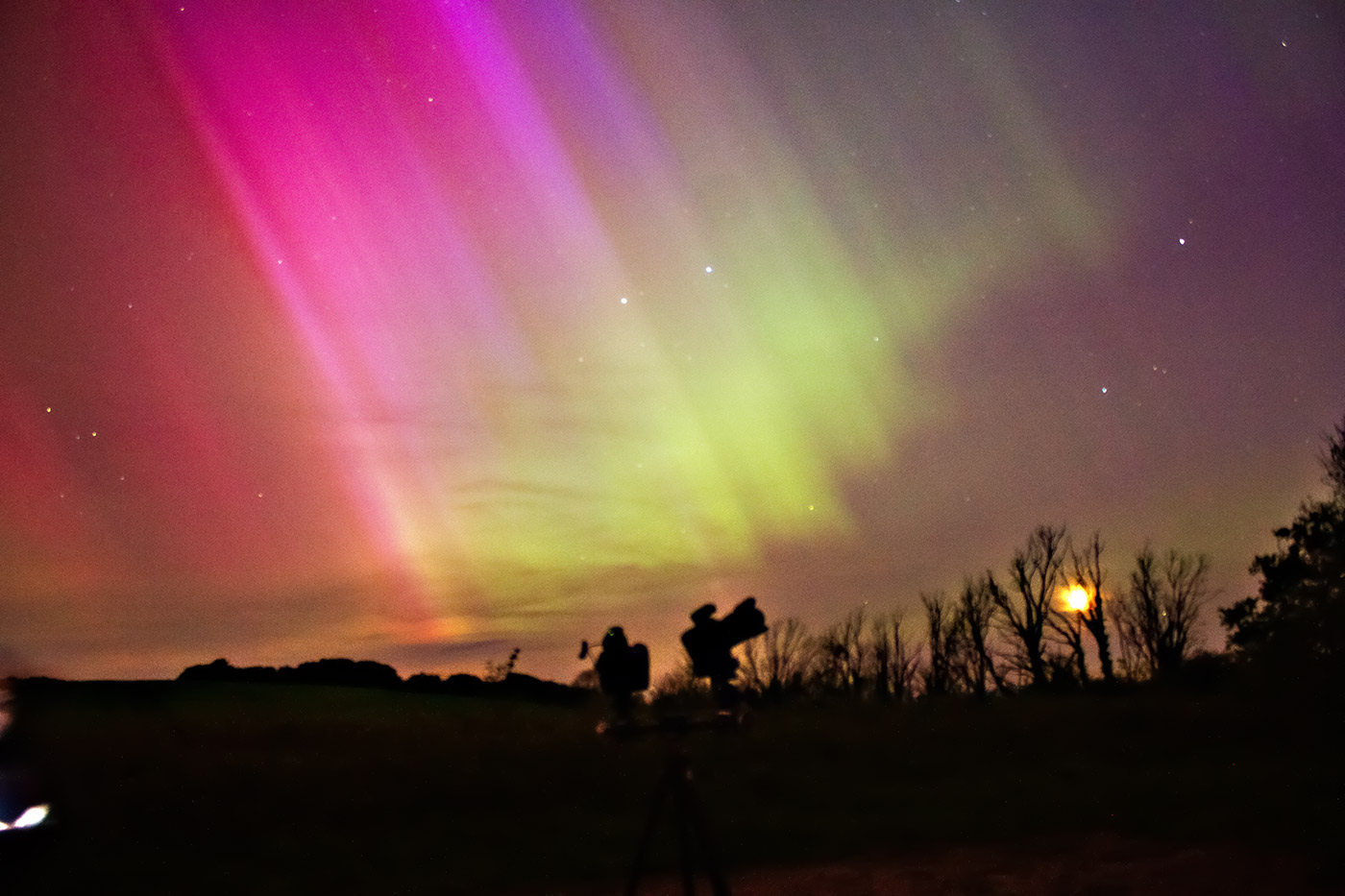
Goodbye astro dark:
It is no doubt the bane of the British astrophotographer. The second we are free of Galaxy Season, our dark skies are limited not just by the normal cycle of the moon, but also by the fact that the sun doesn’t properly set, so we have a sort of astro-twilight all night just as the summer targets rise. Sunday 25th May 2025 (well, really very early Monday morning) will give us just 26 minutes of astro dark. This golden photon-capturing time is 00:48 to 01:14.
The next time we see this darkness return is 21st July 2025. However, despite the lack of true darkness, it will still be dark enough to image, and there are certainly many targets to capture. One I am particularly looking forward to is the Eagle Nebula.
Here is the moon calendar for the month. Sadly, our dear friend Bob Marshall hasn’t been out and about much this month, but kindly Vince Cooper and Rebecca Kent have stepped up and given us some Lunar Love!
Vince writes "...2 bigger photos. Takahashi fsq-85edx with field flattener focal length 455mm.
Camera zwo 294mm pro Skywatcher eq6-r pro tracking centered on handset.
Processing on Affinity. Smaller on a tripod with redcat51 attached to Nikon d750 single shot."
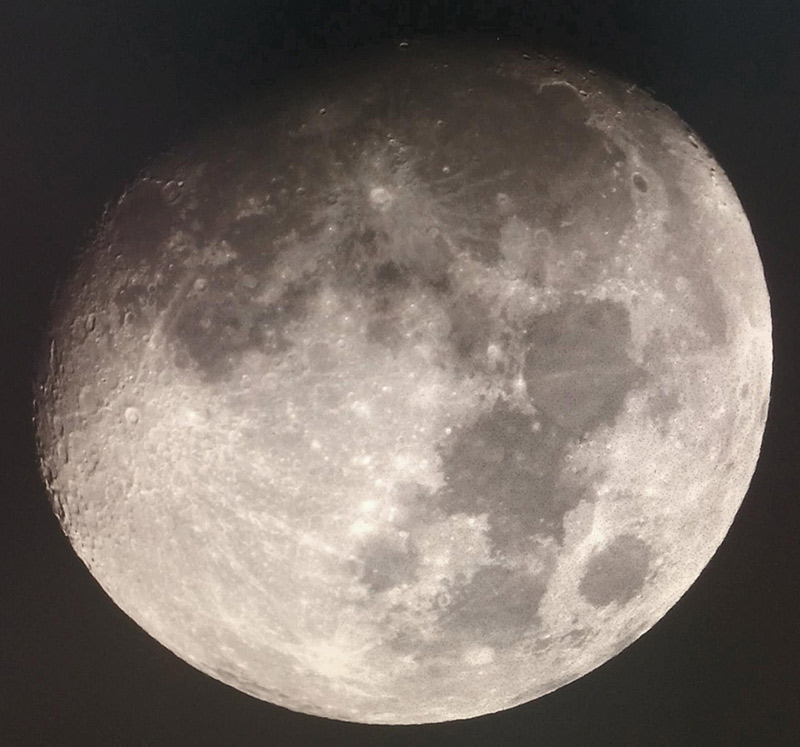


Rebecca has kindly shared "...These were taken with an ir pass filter with my sv505c. Can’t remember what scope I used!..."
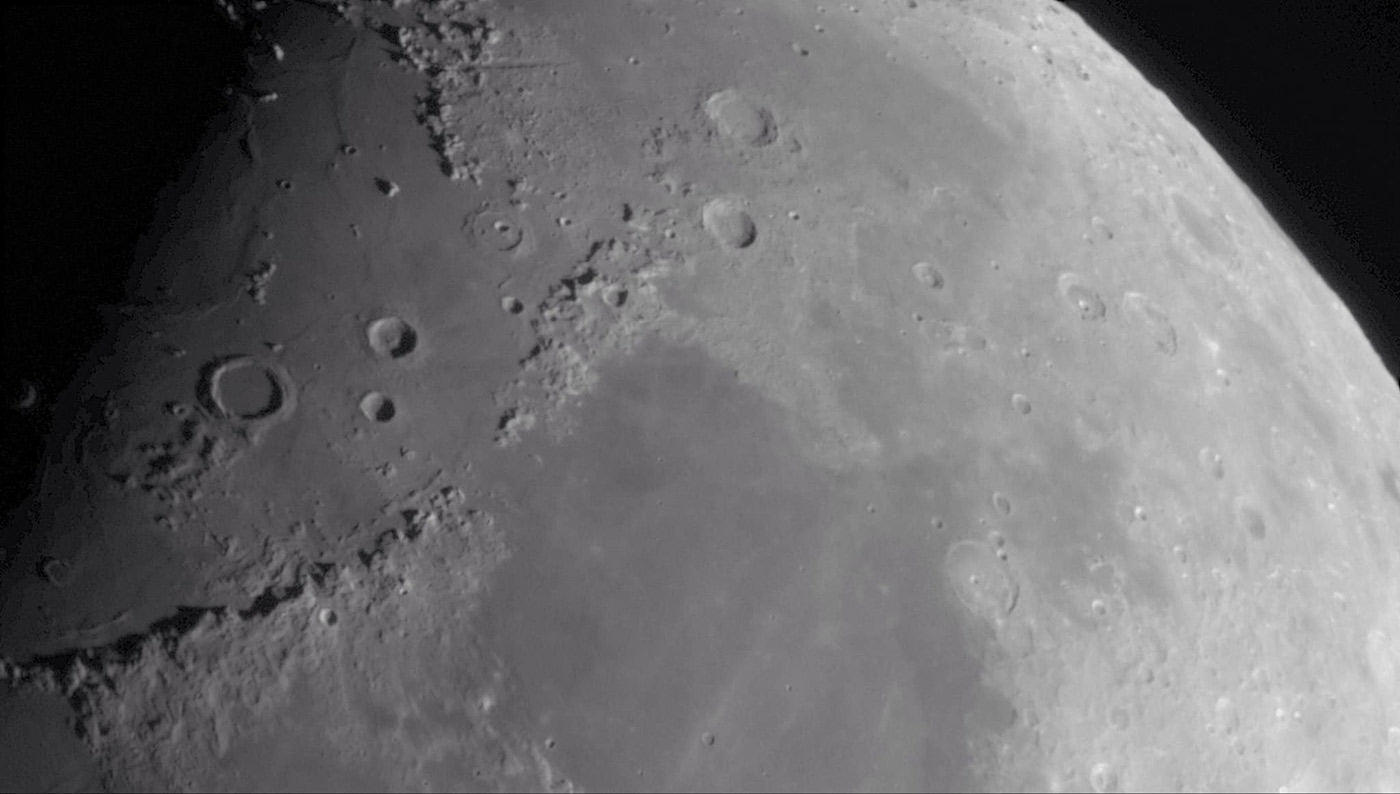

Deep Sky Objects
Late May, we start to see the return of the summer Deep Sky targets. So lovely to have something more than galaxies to image, unless that is you prefer them. Cygnus, Aquila and the Milky Way core are all literally on the horizon in late May, rising overhead as the night goes on.
A herd of Elephants’ Trunks (IC 1396)
One of my favourite summer targets, and as soon as it cracked the horizon I was out imaging it. Found in the constellation of Cepheus about 2,400 light years from Earth, this nebula is a dark and dense finger of wonder protruding across this nebulous haven of star formation. I like to imagine that the finger, or should I say trunk as some like to see it, is forming the stars within it, caused by intense gravitation from the dense black dust and wind created by the young stars taking their first breath.
As you can see in the variety of images I have processed, I have tried to mess with the colours, to try in one case to give a ‘Hubble palette’ effect, despite being shot with a one-shot colour DSLR, namely my astro-modded Canon 500D.
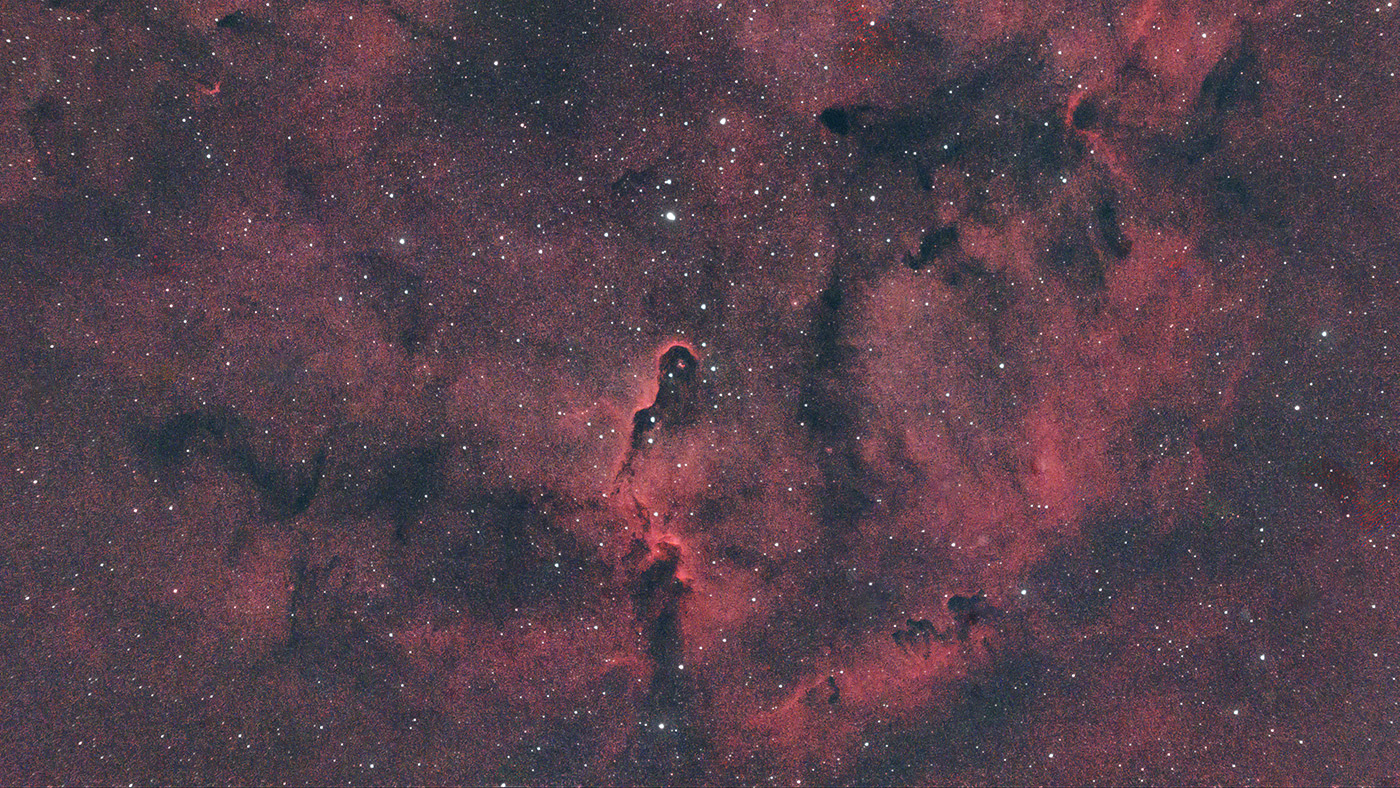
Photometric colour calibrated image (what it actually looks like).

A more orange rendition, to try and exaggerate the contrast.
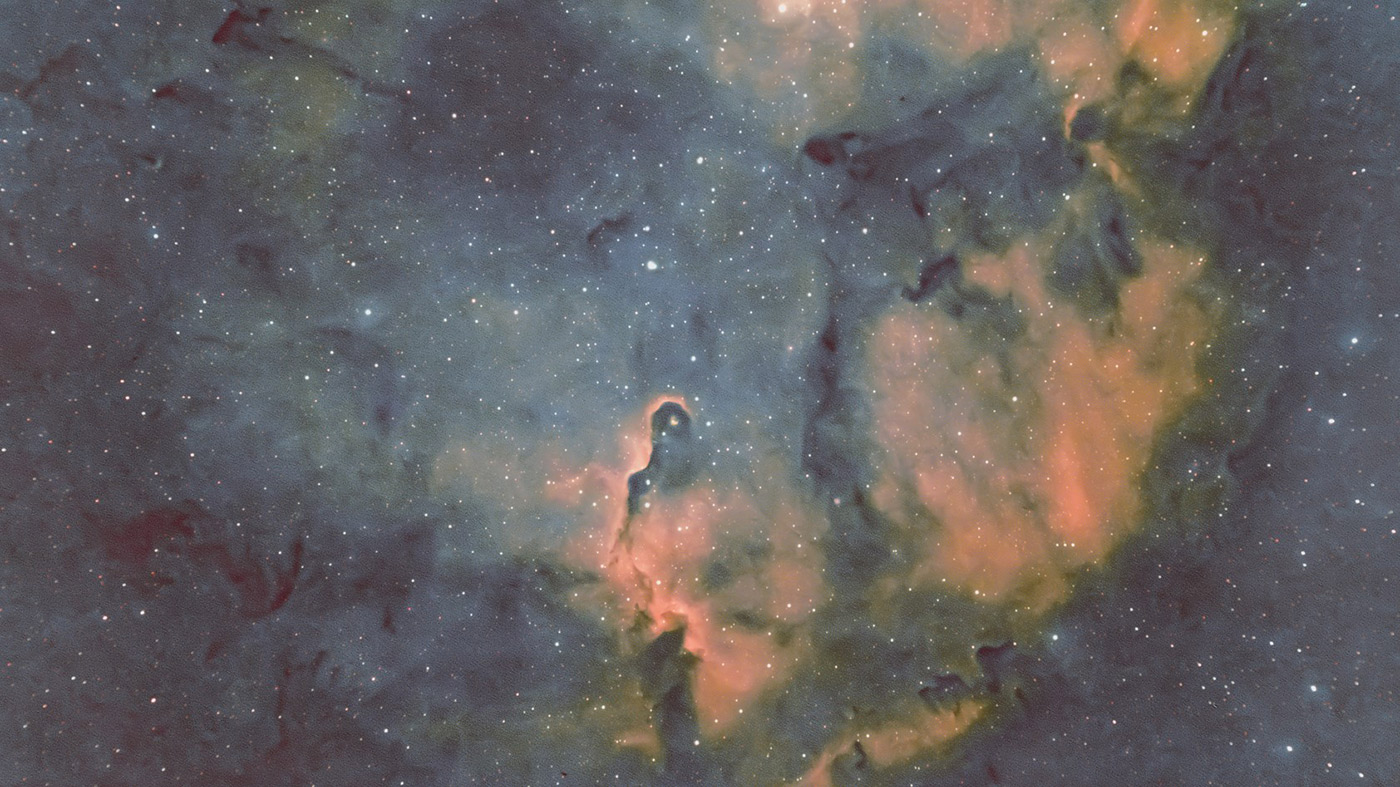
A tribute to the 'Hubble Pallete'
Exif:
Camera: Canon 500D - astro moded.
Telescope: Altair Astro 70ED Telescope (420mm) + 0.8 reducer.
Mount: Sky-Watcher EQ5 Pro
Filter: Optolong L eNHance
Guide Camera: ZWO ASI120mm-s
Guide Scope: SVBony 30mm (f4)
Computer: ZWO ASIAIR pro
Method:
Lights: 24 x 300s ISO 1600.
Darks: 10 x 300s.
Stacked in Deep Sky Stacker, Siril for Photometric Colour Calibration and StarNet++ for star removal. Stretched, recompiled and edited in PhotoShop.
North America (NGC 7000) / Pelican Nebula (IC 5070)
Both of these wondrous emission nebulae are very easy targets for beginners. In fact, I have included my very first attempt at this target, with my Canon 7D, no mount, just a tripod and intervalometer, taking 6-second exposures. Found in the constellation of Cygnus, the gaseous contortions really capture the eye due to their detail. To give you an idea of scale, the North America Nebula (the lower half of the image) covers an area the same as 10 full moons. It is a massive 140 by 90 light years.
The black void you can see separating the two is not, as it would seem, dark space between them, but is instead a thick black dust region, like black oil in water, suspended on top of it. Below this is believed to be a bright star hotter than 30,000K, lighting it all up.
As you can see, I haven’t done much (if any) noise reduction. This is because I found that when I did, even just a little, the detail was lost. For sure, this image could do with much more time on it, and as soon as I have the chance, I shall. But for one hour, in a dark sky location on the South Downs, I am happy.
The Pelican Nebula, which is the top middle structure in the image, I find particularly intriguing. The way the gaseous region folds and bends really shows the turbulence that must be there. It is known to be a particularly active star-forming region. These cold gas clouds are slowly being heated and causing the ionisation of the nebula by the new stars in which they form.
Right in the top middle of the image is a particular point of interest for me. You may say the back of the head of the pelican. Here you can pick out a black hair-like object. This, although small in my image, is much like the Elephant’s Trunk object captured above. And for sure, when I get my hands on either a camera with a smaller sensor or a more powerful telescope, this will form the basis for an exciting project.
Another wondrous part of this image is the Cygnus Wall, a bright structure lighting up the bottom right of the image. This, like the Pelican Nebula, is an area of intense star formation.
I am sure you will agree I have come a long way.
My first attempt: 25th August 2023, Canon 7D, tripod and intervalometer 6 secs exposures ISO 1600:
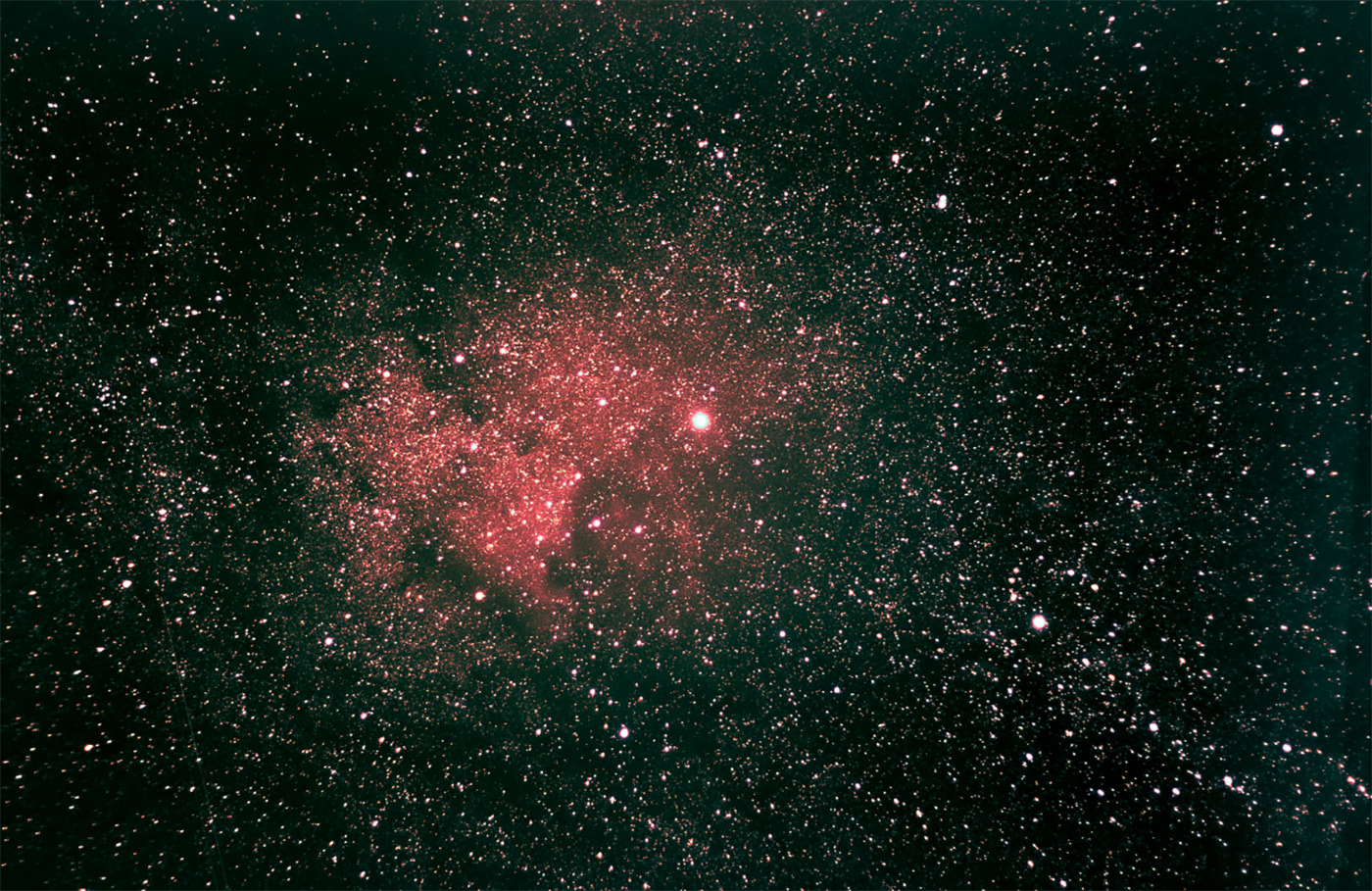
My latest attempt: 17th May 2025

Exif:
Camera: Canon 500D - astro moded.
Telescope: Altair Astro 70ED Telescope (420mm) + 0.8 reducer.
Mount: Sky-Watcher EQ5 Pro
Filter: Optolong L eNHance
Guide Camera: ZWO ASI120mm-s
Guide Scope: SVBony 30mm (f4)
Computer: ZWO ASIAIR pro
Method:
Lights: 12 x 300s ISO 1600.
Darks: 10 x 300s.
Stacked in Deep Sky Stacker, Siril for Photometric Colour Calibration and StarNet++ for star removal. Stretched, recompiled and edited in PhotoShop.
Share this post:
By Jonathan Penberthy on 30/05/2025
Jonathan Penberthy
Cosmic Shutter Seeker and Star Programmer
Jonathan Penberthy is the Cosmic Shutter Seeker and Star Programmer at Park Cameras, with over 20 years of experience as a software engineer. His career journey has spanned industries, but a move to Park Cameras sparked a passion for astrophotography. Jonathan’s interest began while working on a lens selection app, leading him to explore the night sky with a Canon 7D. When he’s not programming or photographing the stars, he enjoys sailing and navigating by the cosmos. Learn more on his profile page.
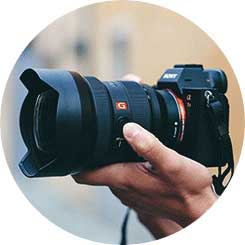
Trade in your old equipment
Fast and easy trade in service ensures your old gear is collected efficiently and you are paid quickly! It's very simple to trade in your unwanted photography gear. Just head over to our dedicated Sell or Part Exchange page, fill out the details, and we'll get back to you with an offer for your old gear. Take the cash, or put it towards the cost of your new gear. It's up to you! Find out more
sign up to the newsletter
Keep up to date on the latest photography news, events and offers. Sign up now